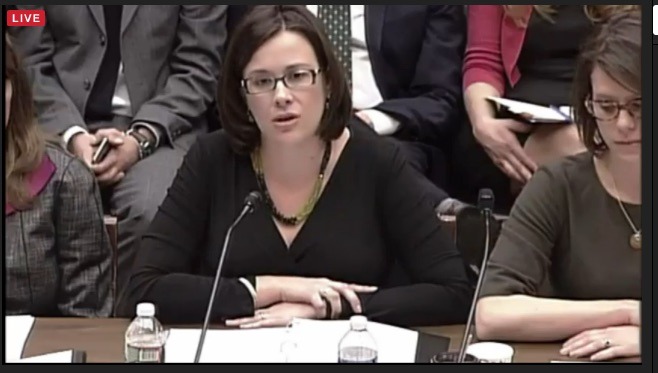Today, March 17, 2016, Sally Wentworth testified in a hearing on “Privatizing the Internet Assigned Numbers Authority” before the Communications and Technology Subcommittee of the U.S. House of Representatives Energy and Commerce Committee. Sally’s oral testimony as prepared is included below. You can also view:
- Sally Wentworth’s written (more detailed) testimony
- Our IANA Stewardship Transition page
- Video recording of the hearing
Chairman Walden, Ranking Member Eshoo, and members of the Subcommittee, thank you for today’s opportunity to testify before you on the transition of oversight of IANA and the impact it will have on global Internet policy and the future of an open Internet.
My name is Sally Shipman Wentworth. I am the Vice President of Global Policy Development for the Internet Society. The Internet Society is a global organization with more than 80,000 members and 116 chapters worldwide. It is also the organizational home of the Internet Engineering Task Force. In its March 2014 announcement,, the NTIA identified the Internet Society as a “directly affected party” to the IANA transition.
Two years ago, the NTIA announced its intent to transition the administration of the IANA functions. We now believe that we have reached a necessary and important step in ensuring the continued uninterrupted operation of the global Internet and in laying the best foundation for its future.
We strongly support and endorse the resulting IANA Stewardship Transition Plan and the Recommendations to Enhance ICANN Accountability that have been delivered to NTIA.
Taken together, this is a plan that:
First, Ensures the continued stability and security of key technical functions that are a core part of the smooth operation of the Internet,
Second, Provides a path forward for strengthening ICANN’s accountability to its community; and
Third, Meets the criteria set by the NTIA in its original announcement.
Through a global, multistakeholder process that engaged industry, civil society, the technical community, governments and many others, the community has reached consensus on a proposal that will provide operational stability, reliability, and continuity for the global Internet.
Mr. Chairman, The Internet is a transnational, borderless “network of networks” comprised of countless individual networks that connect around the globe. The basic architecture of the Internet that we all rely upon every day is global and distributed – no one entity, government or otherwise, controls it.
The governance of the Internet reflects this distributed approach. This model of governance is often referred to as the multistakeholder model. In essence, this is a way of getting things done that is bottom-up, inclusive, transparent and that ensures that the relevant expertise can be brought to the table to solve hard problems. Like the Internet architecture itself, multistakeholder Internet governance ensures that no one stakeholder captures or takes over the Internet at the expense of others.
The management of the IANA functions from the early days of the Internet through to the present embodies a multistakeholder model based on distributed coordination and transparent governance. The proposal before the United States government ensures that, the multistakeholder systems that have facilitated the security and stability of the IANA functions remain strong and in-tact.
Policy development for the IANA functions will remain distributed among three organizations – the IETF, the Regional Internet Registries and ICANN – will each continue to employ multistakeholder processes to develop and manage the Internet identifiers. The stewardship of the IANA functions will be carried out by ICANN, itself a multistakeholder entity.
Importantly for this Subcommittee, the transition proposal directly addresses concerns about capture or control of IANA by any one stakeholder. Any multistakeholder process must be vigilant about preventing capture. In the transition proposal, no single party has undue control, and there are protocols in place to prevent any individual, organization or government from seizing jurisdiction or excluding others from the stewardship process.
The proposal is also crafted so that IANA remains independent of any government or intergovernmental organization.
The Internet Society is confident that the current proposal creates adequate mechanisms to prevent capture by governments or other entities, ensuring the core IANA functions will continue to operate free of undue influence.
In conclusion, I want to leave you with one key message:
The Internet Society firmly believes that the transition plan that was sent to NTIA upholds the processes and principles that have served as a foundation for the Internet’s growth and development to date.
The communities have worked hard to ensure that the IANA functions will continue to operate in a predictable manner, consistent with the need to maintain the security, stability, resiliency and openness of the Internet.
Finally, I want to use this opportunity to thank this Subcommittee for its steadfast support for the multistakeholder model and for your continued engagement to ensure a smooth and stable transition of the IANA functions.

